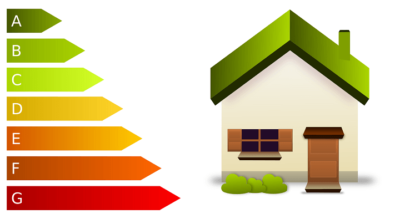Have you ever found yourself captivated by the intricate details in a piece of woodcut art? Have you ever wondered about the journey a chunk of wood went through to transform into a stunning masterpiece? Well, you’re about to discover the fascinating process behind these amazing works of art.
From selecting the perfect piece of timber to the final strokes of the chisel, read on. In this article, we’re going to do a deep dive into the world of woodcuts and how they are made. Let’s begin.
Choosing the Right Wood
When we talk about woodcuts, it’s worth noting that not all types of wood are equal. Different species of trees produce wood with various characteristics. This can significantly affect the outcome of the art piece.
Let’s take a look at some of the most popular types used by artists in their work:
Pine
Known for its softness, Pine is a favorite among beginners. The soft nature of the wood makes it easier to carve. This allows newcomers to master their skills without much resistance.
However, the downside is that it’s not very durable. The soft fibers can make the final piece prone to damage over time.
Cherry
With its beautiful reddish-brown color, Cherry wood is a popular choice for creating woodcut art. Its fine grain and smooth texture make it ideal for intricate details. Its sturdiness allows for long-lasting pieces.
Walnut
Walnut is a popular choice for both traditional and contemporary wood arts. Its rich dark color and dense nature make it perfect for creating deep textures and detailed designs.
Oak
Oak is the go-to choice for artists looking for a wood that can withstand the test of time. Its coarse grain texture provides an interesting depth to the artwork.
Birch
Birch is a great all-rounder, offering a nice balance between hardness and workability. It’s known for its light color and fine grain. It is a popular choice for artists requiring a smooth and consistent surface for their wood art.
Maple
Maple, with its uniform texture and light, creamy color, is a favorite for intricate woodcuts. Its density allows for precise and detailed carvings, making it an excellent choice for pieces that require detailing. Its inherent hardness, however, may present a bit of a challenge for beginners.
Mahogany
Famous for its reddish-brown hue and straight grain, Mahogany is a luxurious choice for wood art. It’s relatively easy to work with despite its hardness, and the resulting pieces are notable for their warm, rich tones and high durability.
The artist must choose from these types of wood. They must also consider the size, direction of the grain, and any potential imperfections before starting their project.
Sketching Out the Design
Once the artist has selected the wood, the next step is to create a sketch of the design. This allows the artist to have a clear idea of how the final piece will look and also serves as a guide during the carving process.
The artist must sketch the art in reverse, as they will transfer it onto the wood using a technique called “image transfer.” This ensures that the final piece appears correctly when printed or stamped.
Carving
After the sketching phase, we step into the carving stage, which is the heart of the woodcut process. The carving process takes skilled hands, patience, and a discerning eye to create intricate patterns and designs.
Traditionally, woodcut artists use chisels, gouges, and knives to carve the design into the wood, removing pieces to create a relief of the image. The areas of the wood carved out will not absorb ink. SI will remain blank in the final print, whereas the uncarved areas will form the image.
The complexity of the design plays a significant role in carving time. Simple designs can be carved using tools for woodcuts in a few hours, while more intricate designs may take several days or weeks of meticulous work to complete. The artist repeats this process for each color layer if the artist intends to create a multicolored print.
In recent years, the advent of technology has supplemented traditional woodcut techniques with custom laser cutting. Laser cutting allows for more precise cuts, especially for intricate designs that would be challenging to achieve by hand. It’s faster and more consistent but lacks the personal touch of hand carving.
Regardless of the method used, the objective is the same: to create a masterpiece that will translate well when inked and printed. After the carving, it’s time for the next exciting phase – the printing! But that’s a story for another time.
Inking and Printing
The next step is to apply ink to its surface. The artist will use a roller to evenly spread ink over the raised areas of the woodcut. Paper is then placed on top of the inked block, and the artist uses a printing press or their hand to apply pressure on the block.
When lifted, the paper reveals a mirror image of the design carved into the wood. This process gets repeated for each color layer, with careful alignment to ensure that all colors line up correctly.
Drying and Cleaning
After the printing, the final step is to dry and clean the print. The ink must be allowed to dry thoroughly before any cleaning takes place. Once ready, the artist can use a damp cloth or brush to remove any excess ink from the paper’s surface.
Editioning
Just like any other form of art, artists create limited wood art. Once the printing is complete, they will number and sign each print. This indicates its place within that edition.
From Woodcuts to Art
Creating woodcuts is a meticulous process. It requires a deep understanding of the materials used, patience, and artistic creativity. Each step plays a vital role in transforming a simple piece of wood into a stunning piece of art.
So, next time you marvel at a woodcut creation, remember the painstaking process behind it. It’s not just a piece of art but a story of its journey from a simple tree to a remarkable masterpiece.
Did you find this article helpful? If so, check out the rest of our site for more.










